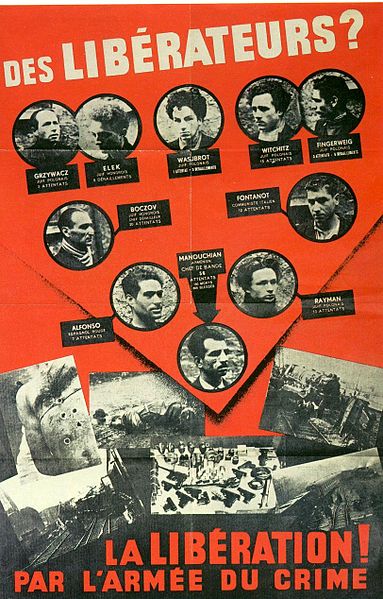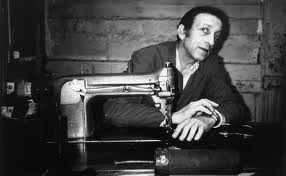The Red Poster

Soon after the execution of Missak Manouchian and the other members of his resistance network in February 1944, the authorities plastered the walls of Paris with a red poster. Featuring medallion photos of the group’s members, the poster read: “Liberators? Liberation by the army of crime.” The verso of the famous Affiche Rouge proclaimed, “If French people pillage, steal, sabotage and kill, it’s always foreigners who give the orders; it’s always the unemployed and professional criminals who carry out the acts; and it’s always the Jews who inspire them. Strangle them now before they strangle you, your wives and your children.”
The foreign names and ugly mug shots (taken after the men were interrogated and beaten) were supposed to disgust the French public. But people dropped flowers at the foot of the walls where the posters hung, and under cover of night people scrawled across the poster the French patriotic slogan, “Mort pour la France” (Died for France). Missak Manouchian, Maurice Fingercwaig, Marcel Rayman, Spartaco Fontano, Arpen Davitian, Olga Bancic and the rest became martyred heroes of the French Resistance. They were later commemorated in a 1955 poem “Strophes Pour Se Souvenir” (Lines for remembrance) written by Louis Aragon for the inauguration of a street in the 20th arrondissement. To this day, the street is still called “Rue du Groupe Manouchian.”
Nancy Kricorian
September 25, 2012
